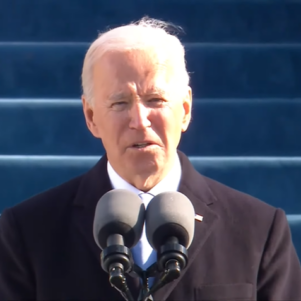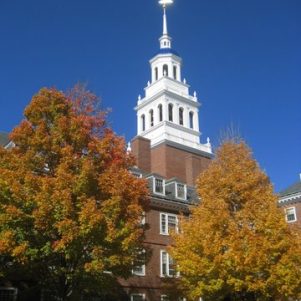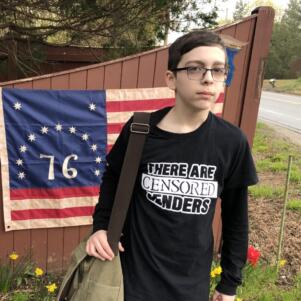The Summer of Love: Hippie Culture’s Lasting Legacy
By James P. Freeman | June 21, 2017, 23:23 EDT
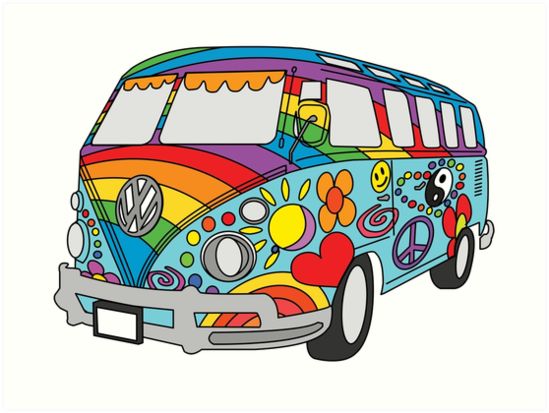
“All across the nation
Such a strange vibration
People in motion
There’s a whole generation
With a new explanation
People in motion
People in motion”
With a clarity piercing the psychedelic colors and psychogenic contours of the time, the actor Peter Coyote, a founding member of the San Francisco counterculture commune, The Diggers, said in the PBS American Experience documentary “The Summer of Love,” “we thought culture [was] much more important than politics.” Fifty years ago, this summer, began hippie culture’s integration into America. Ways that still endure today.
Many of the Baby Boom Generation (born between 1946 and 1964), the film recounts, were “disillusioned with the world around them” because of the Kennedy assassination, the increasingly militant civil rights struggle, and the growing conflict in Vietnam. But the seeds of discontent were sown in the 1950s, a period marked by an abundance of “affluence and anxiety,” said the writer Theodore Roszak. The economic boom of post-World War II brought new-found prosperity and fears of a Cold War going hot — and the prospect of nuclear annihilation.
By the mid-1960s many young people (more than 90 million Americans were under the age of 25, one half the total U.S. population) were seeking an explanation and understanding of what Coyote called the “seething turmoil.”
Some found inspiration and refuge in the beatniks or hipsters, as they were called, from twenty years before. The Beat Generation — whose West Coast sanctuary was San Francisco’s North Beach community — wore black, read poetry, studied mysticism, listened to jazz, smoked marijuana, and met in dark coffeehouses. This obscure but influential underground movement rejected the conformity and materialism of Eisenhower’s fifties and found the joylessness and purposelessness of modern society sufficient justification for both withdrawal and protest. Less political. More existential.
Drawn to a similar bohemian lifestyle, with a utopian vision of “changing the world through peace and love” (flower power), new “junior grade hipsters” (hippies for short) moved to the low-rent Haight-Ashbury district of San Francisco, known for its liberal disposition, cultural range and “spirit of historic openness.” They shared the beatnik’s disdain of corporatism, inequality, violence, and commercialism (North Beach became too commercial), and sought a simpler way of life (less urban, less consumption; more communal, more spiritual). But they preferred wild colors, absorbed rock and roll, experimented with the mind-altering drug LSD, and gathered in sunny Golden Gate Park — all supposed building blocks in new ways of “thinking” and “being” for a new community. By the summer of 1967, like swarming locusts, tens of thousands of curious young people descended upon the area. Strange vibrations, indeed.
The period from October 1966 to October 1967 (peaking in June) may have ushered the greatest cultural upheaval in a single year in American history.
October 6: The Love Pageant Rally (the day LSD was made illegal in California); January 14: The Human Be-In (where Harvard’s Timothy Leary implored 35,000 attendees to “Turn On, Tune In, Drop Out”); April 5: “Council for a Summer of Love;” June 1: The Beatles’ “Sgt. Pepper’s Lonely Hearts Club Band” (which “gazed forward in sound and sense”); June 16-18: Monterey International Pop Festival (with the theme “Music, Love, and Flowers,” where Jimi Hendrix’s incendiary performance surely wilted some of the 150,000 orchids flown in from Hawaii); June 25: The Beatles’ live broadcast via satellite of “All You Need Is Love” (to a global audience of 350 million); October 6: A mock funeral for The Death of the Hippie (“to end the commercialization of the hippie lifestyle and the main stream appropriation of their social experiment”).
Mark Harris wrote “The Flowering of the Hippies” in September 1967 for The Atlantic, an early, yet compelling observation on the successes and failures of the movement. Hippie values were quickly permeating the culture.
This movement had to be seen to be believed.
“The visual scene,” Harris noted, was just four blocks along on Haight Street but “was so very visual that photographers came from everywhere to shoot it, reporters came from everywhere to write it up with speed, and opportunists came from everywhere to exploit its drug addiction, its sexual possibility, and its political or social ferment.” Some thought that media unduly amplified the importance of what would have been a flicker of frivolous rebellion, but hippies were masters at manipulating that very media, too. The “Funeral Notice” written and distributed by hippies for the mock funeral, described the hippie, appropriately, as the “devoted son of Mass Media.” Hippies also became experts at marketing, where gatherings became hyped-up “events.”
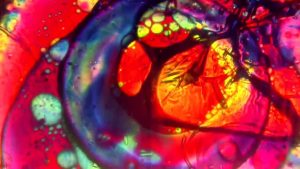
Their form of social media was television. Color television, the new visual medium. (That era’s Twitter.) In 1960 there were just 500,000 color sets in the United States. By July 1967, it was estimated, 11,270,000 homes had color televisions, or roughly 20 percent of all homes with televisions. Today, with further advances in technology — Snap and Instagram — visual expression is essentially limitless. In fact, any expression loudly screams: See me! Follow me!
Harris understood that “hippies were Puritan Americans, gorged with moral purpose, and loath to confess that their captivation was basically the pursuit of pleasure. They therefore attached to the mystique of LSD the conviction that by opening their minds to chemical visions they were gaining insights from which society soon should profit.” (As a consequence of the pleasure principle, the venereal rate in Haight-Ashbury multiplied by six.) Today, hedonism in the form of sexual liberation (now “friends with benefits”) and drug experimentation (now “recreational”) is an accepted social norm. Even Occupy Wall Street, another failed political movement, was tinged with entertainment in the form of protest.
If sex became casual so too did clothing. Harris saw hippies as “draped, not dressed.” Speech became “irrelevant” (You Don’t Say Love You Do It). History became unconnected. (“A movement which thought itself the world’s first underground was bound to make mistakes it could have avoided by consultation with the past.”) Panhandling became commonplace (“which was against the American creed, which holds that work is virtue”) — odd, since hippies “were middle class American children to the bone.” The Diggers created a Free Store, a precursor to the idea of a gifting economy. Today, education is given consideration as a free entitlement. (Napster’s file sharing system in the late 1990s — fostering the belief that musician’s work should be made free — was steeped in 1967 idealism.)
“The ennobling idea of the hippies, forgotten or lost in the visual scene, diverted by chemistry, was their plan for community,” wrote Harris. “Far from achieving an exemplary community of their own, with connections to existing community, the hippies had achieved only, in the language of one of their vanguard, ‘a community of acid heads’.” Today, individualism is paramount where uniqueness, self-expression, and a do-it-yourself ethos are celebrated attributes, despite calls for greater community.
And, remarkably, there was no concept of diversity back then. (Most hippies were white, middle class, and affluent.)
Still, hippies forced public officials to examine and modify many standing practices: Laws on marijuana were debated; police methods were reviewed; new and imaginative uses of public facilities were embraced. Woodstock, Live-Aid, and Coachella, for instance, would have been inconceivable without pioneering techniques devised for The Monterey Pop Festival.
Ten years ago, The San Francisco Chronicle recalled the significant cultural impact of The Summer of Love, as it still resonates “in strip mall yoga classes, pop music, visual art, fashion, attitudes toward drugs, the personal computer revolution, and the current mad dash toward the greening of America.” And advertising. In 1998 Volkswagen promoted the new Beetle in a television spot with the words: “Less flower. More power.”
This spring, San Francisco’s The Observer highlighted the bizarre twist over hippies’ scorn about consumerism and commercialism. The Bay Area today is “the global headquarters of big tech. Here community is a euphemism for customers, disruption means starting your own company, and free love means Tinder or Grindr. The San Francisco sound, which once referred to psychedelic rock groups, is now ‘ka-ching’ – money.”
Some might argue that the Boomer generation became politically conservative under the leadership of President Ronald Reagan during the 1980s, evidence of counterculture excess. While the country remains unquestionably politically right-of-center today, many hippie ideals are permanent and the country remains steadfastly culturally liberal now. The resulting national tension is, perhaps, best understood by the commentator Mark Steyn, who figures: “You can’t have conservative government in a liberal culture.”
“San Francisco (Be Sure to Wear Flowers in Your Hair)” was the totemic soundtrack that summer. But in August the Bee Gees recorded the song “Massachusetts,” intended as an antithesis to flower power anthems of the time, where the protagonist travelled to San Francisco to join the hippies only to become homesick. A decade later, with savage irony, Bee Gees’ music became a soundtrack to another cultural phenomenon, disco. Different clothes and music in 1977, for sure, but the same hedonism and narcissism rooted in 1967.
James P. Freeman is a New England-based writer and former columnist with The Cape Cod Times

